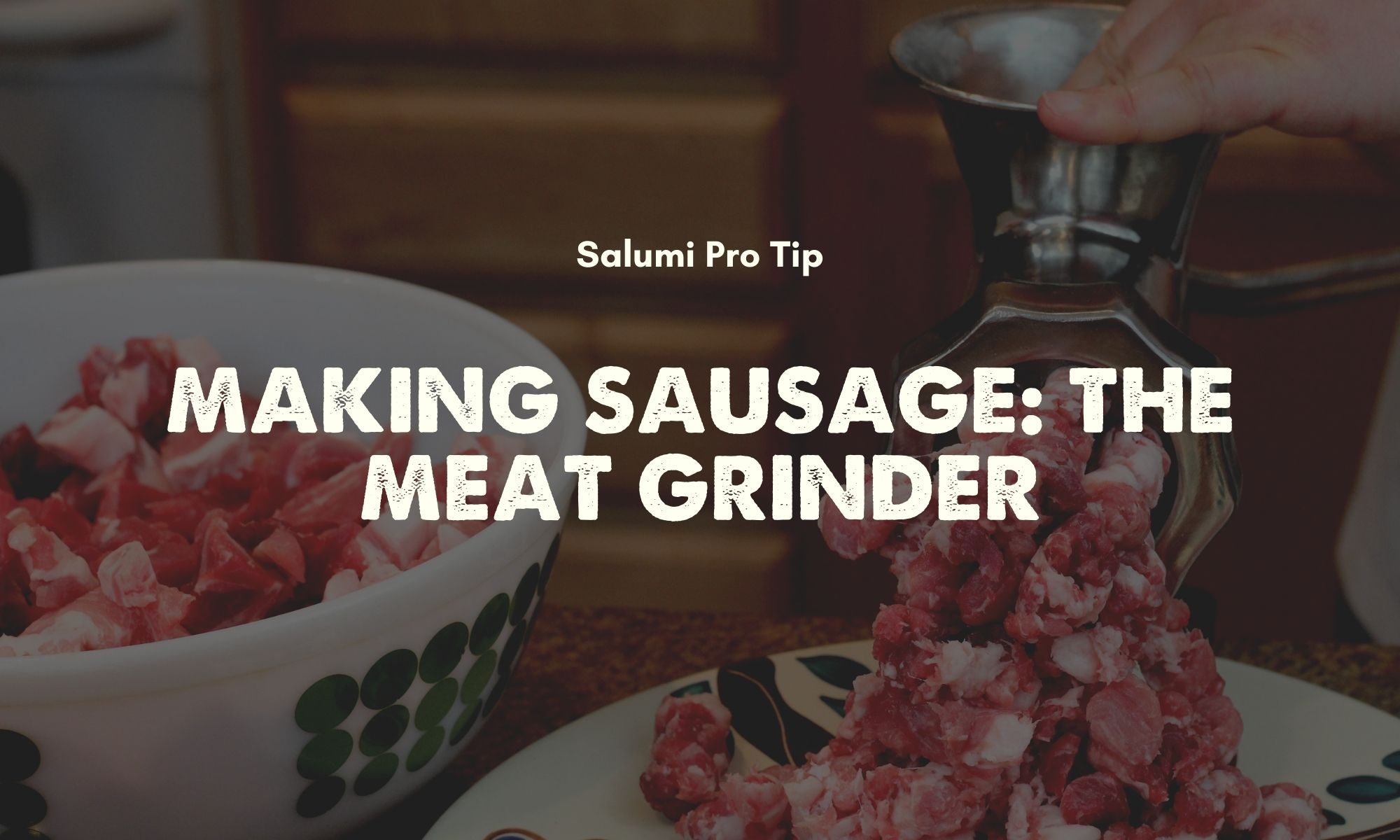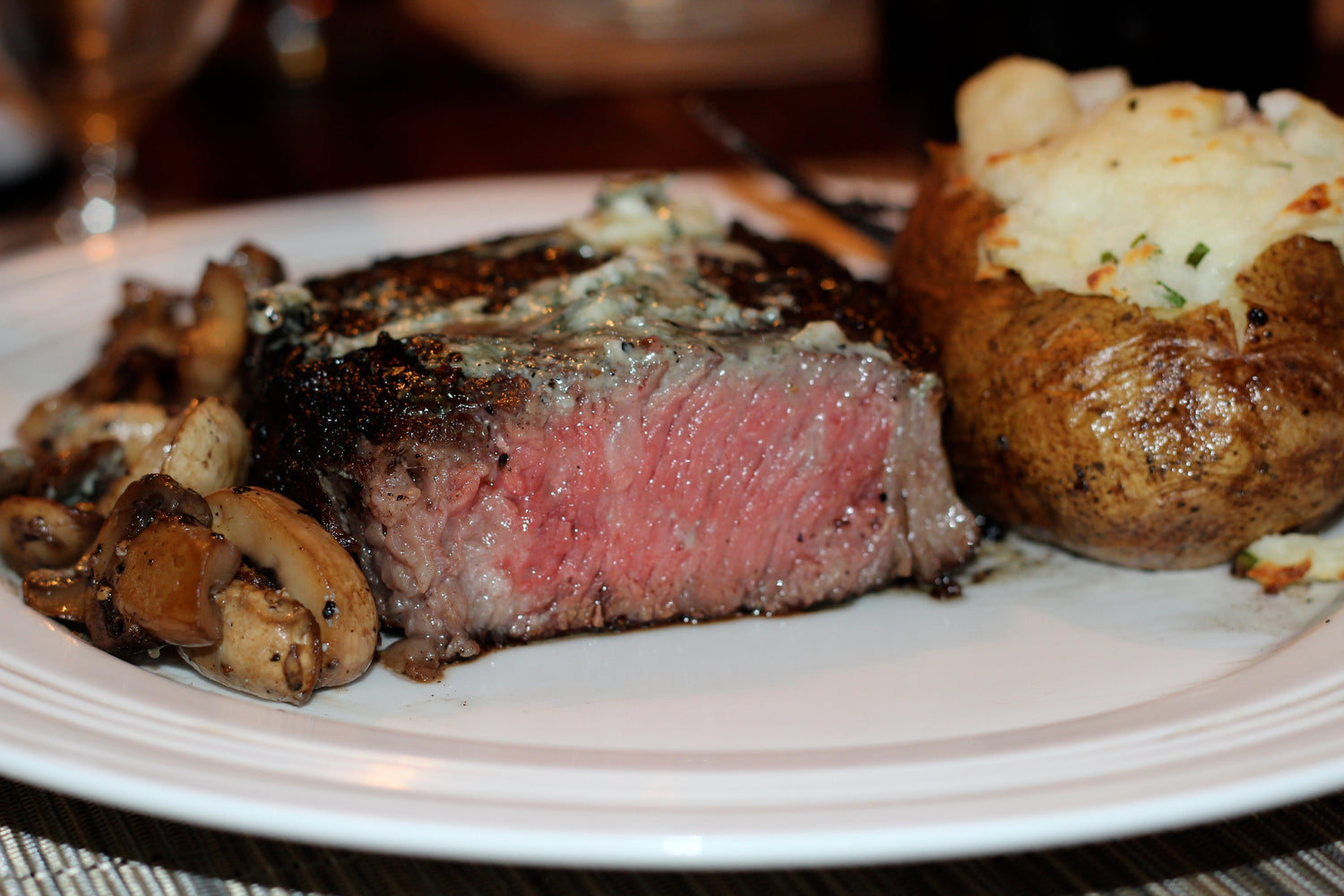Almost every region has a recipe for sausage (or Salumi or Salume) – from the North, there is bratwurst; from the South, there is Andouille and regular pork sausage; the East Coast has almost too many to count (and don’t get us started on street meat at the many New York festivals) from multiple ethnicities; and Chicago, with the largest Polish population outside of Warsaw, has Kielbasa.
What do they all have in common? They are all ground – and grinding sausage is the best way to get started in this wonderful craft.
In this post, we will discuss the process a bit but really focus on the tool that turns chunks of otherwise boring meat and fat (the fat is often what creates the personality of the sausage) into dried, cured, fresh and cooked pieces of Heaven here on Earth.
The Process
Start with whatever meat tickles your fancy – or make a blend. We often start with pork but also add beef, lamb, or other game meats.
Next, if you are using a leaner cut or just a regular cut, you may need to add fat. We typically recommend pork fat, as it has a neutral flavor, and it also renders well during the cooking process. To get the right flavor and mouthfeel, a good rule of thumb is a meat-to-fat ratio of 70/30. Some people may argue for less fat, and that is okay – traditional ground beef is usually 80/20 (meat to fat), and you can go up to that with sausage if that is your preference.

Always keep your meat and fat cold prior to grinding. This will make for a better grind (and a better finished Salumi experience). Some people argue that “strips” of meat and fat work better than “cubes." We do not have a preference but are interested in your preference and why, so feel free to leave us a comment!
Now you are ready to select your spices – these will vary based on the variety you want to make.
Now, on to the grinders…
There are three main types of sausage grinders – Manual, Electric and Commercial. Which one is right for you? That depends on you and how serious you might want to get about making sausage!
Manual Grinders: Like the name suggests, these are typically hand-powered. They clamp onto your counter or table and are perfect for the casual sausage maker that does not make a large quantity at a time and doesn't want to dedicate a lot of storage space to their grinder.
A manual grinder consists of:

Check out this list of quality manual grinders.
Electric Grinders: These are usually a step up from the manual grinder in terms of ease of use, but it's a good idea to check out the power of the motor and how much the grinder can handle. The last thing you want to do is spend more for an electric grinder only to get one that is less effective than a manual grinder.
The largest benefit to an electric grinder is that it typically comes fully equipped (see image below) with multiple grind blades, plates, and sausage stuffers. If you have ever worked in the grocery business, you may notice that these at-home electric grinders look a lot like miniature versions of the industrial grinders used in meat departments across the country. Prepare to spend $200+ to get a good quality grinder – with all of the parts needed!

Here is a list of Amazon best sellers for electric grinders.
Commercial Grinders: Those who like to have the very best tools at their disposal can upgrade to a commercial grinder. This may be overkill, but we know a lot of people take so much pride in their tools that they always buy the best quality even if they rarely (or never) use them.
From a practical perspective, commercial grinders have what it takes to go for longer periods of time – meaning larger batches of your perfect recipe or multiple styles of Salumi in one marathon session.
Marked by higher capacity, more powerful engines, and all of the extras and upgrades, these grinders tend to be heavy – so make sure you are ready for that! They also come at a higher cost. Here are several great options from the Web Restaurant Store.
If you're in the commercial grinder camp – or just enjoy making your own sausage – check out our Facebook group! We would love to have you join and educate our community on what you have learned about the art of sausage making.
A Final Word
Always make sure you have a course grind plate and a finer grind plate. Grind your sausage coarse to start, and then shift to a finer plate (being sure to chill the meat prior to the next grind). This will help you make the tastiest sausages.
Also, the “Sausage Shooter” is a must – this will help you pre-load casing (whether edible or those used for Dry Aging) and then have the proper diameter links formed during the final grind.
Did you know that UMAi Dry's Salumi membrane is the perfect "casing"? It is pre-formed so it fills like a natural casing. When you are done fermenting and aging, it simply peels off, and you have nothing but sausage left – no annoying casing to decide if you have to chew/eat or discard! Check out our Salumi page.




